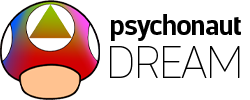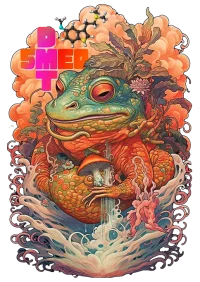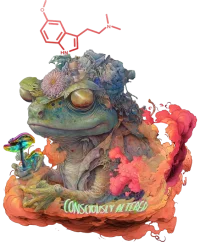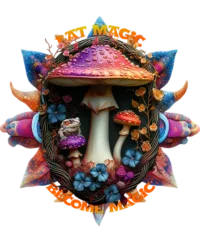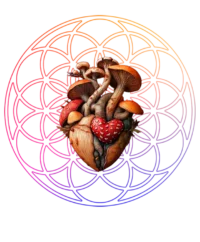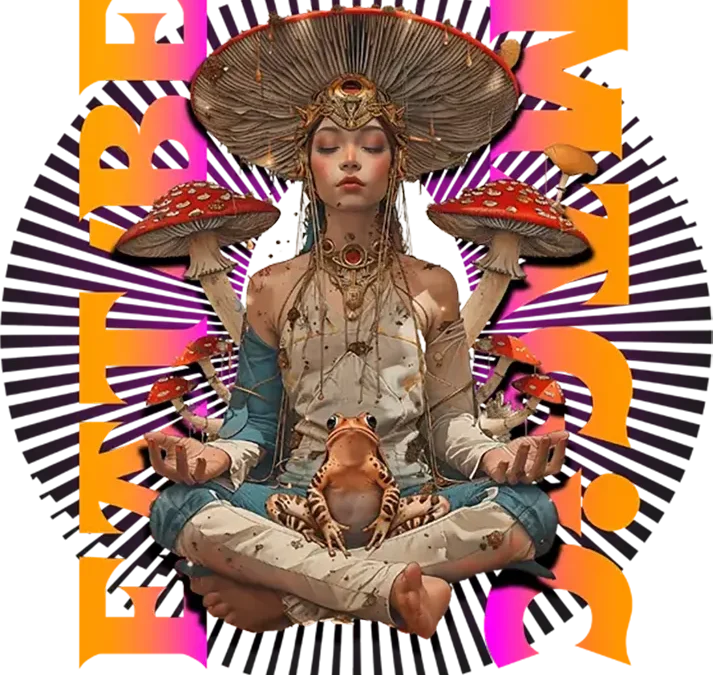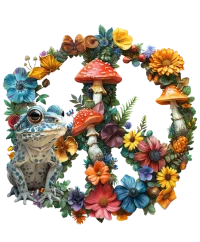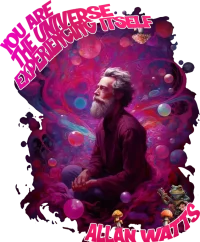Traditional Spiritual and Religious Use
For centuries, entheogens have been integral to spiritual and religious practices worldwide. These substances facilitate altered states of consciousness, allowing individuals to connect with higher powers or divine presences. The term “entheogen,” derived from Greek meaning “god within” and “to generate,” underscores their foundational role in spiritual communion. In traditional settings, entheogens like ayahuasca, peyote, psilocybin mushrooms, and iboga are employed in ceremonies and rituals. These rituals are designed to guide the participant through profound spiritual journeys that explore awe, sacredness, and concepts of eternity. The Native American Church, for example, integrates peyote as a sacrament, using it to enable direct spiritual experiences and deeper connections with the divine. Through these practices, entheogens offer transformative insights that are both deeply personal and spiritually enlightening.
Recognized Religious Practices
Entheogens continue to be central to religious practices spanning from ancient sacred traditions to modern spiritual frameworks. Their use is deeply rooted in shamanism, spirituality, and various religious traditions worldwide, demonstrating a timeless appeal. Derived from Greek words, entheos (“divine”) and genesthai (“generate”), these substances are revered for their capacity to induce meaningful spiritual or mystical experiences. Scholarly attention has been drawn to their role in both historical and contemporary religious practices, where they are often regarded as sacraments or essential components of rituals. Many societal structures integrate entheogens into formal religious contexts, facilitating sacred experiences and enhancing connections with higher powers. In modern times, some religions continue to incorporate entheogens as sacraments, with users frequently reporting profound spiritual and mystical states, underscoring their enduring significance across both organized and personal spiritual explorations.
Key Entheogens and Their Effects
Entheogens are psychoactive substances used to induce mystical experiences, traditionally linked to religious and shamanic rituals. These substances have been integral in spiritual practices across various cultures worldwide. The word “entheogen” was coined in 1978 by ethnologists to describe plant substances that facilitate divine experiences. Unlike synthetic drugs, entheogens are naturally occurring substances, often associated with a sense of connection to a higher spiritual entity or the universe. This spiritual underpinning differentiates entheogens from other psychoactive drugs, emphasizing their historical and cultural significance. While some advocate for their responsible use to promote well-being and spiritual growth, the legal status of entheogens varies greatly, with ongoing movements seeking to decriminalize their use for cultural and religious purposes.
LSD (Lysergic Acid Diethylamide)
LSD, or lysergic acid diethylamide, is a potent entheogen that belongs to the class of psychedelic drugs. It is known for inducing profound changes in perception and consciousness, leading to experiences often described as mystical or divine. Historically, LSD has been associated with religious and spiritual practices, fostering a deep sense of interconnectedness and spiritual insight in those who partake. Despite being a synthetic compound, LSD’s effects are comparable to those induced by naturally occurring entheogens, highlighting its place within this category. While the term psychedelic may commonly describe it, proponents prefer the term entheogen to emphasize its capacity to generate divine experiences, fostering personal and spiritual exploration.
Peyote and Mescaline
Peyote is a small, spineless cactus native to North America, with mescaline as its principal active ingredient. This naturally occurring entheogen has been utilized in indigenous religious ceremonies, particularly by Native American groups, for its mind-altering and spiritually enlightening effects. When consumed, mescaline induces perceptual changes similar to those caused by LSD, promoting expanded awareness and introspection. The upper part of the peyote cactus contains disk-shaped “buttons,” which are either chewed or brewed into a liquid to produce hallucinogenic effects that can last up to 12 hours. This rich cultural and historical context underpins peyote’s role as a sacred tool for religious and spiritual experiences.
Psilocybin Mushrooms
Psilocybin or magic mushrooms, renowned for their psychoactive properties, have been used for centuries across various cultures for spiritual ceremonies and mystical experiences. These mushrooms are recognized as entheogens because they facilitate altered states of consciousness, allowing users to connect with a higher power or achieve profound personal insights. While traditionally utilized in shamanic and religious rituals, psilocybin mushrooms continue to hold significant cultural and spiritual value today. In some areas, such as Olympia, policies prioritize their enforcement as a low priority, reflecting a growing interest in their potential benefits. These mushrooms underscore their longstanding role in spiritual practices, illustrating their continued relevance in modern society.
PCP (Phencyclidine)
PCP, commonly known as “angel dust” or “killer weed,” was initially developed as a general anesthetic in the 1950s. However, its use in the medical field was discontinued due to adverse side effects. Despite this, PCP remains prevalent in illicit drug markets, often appearing as a liquid, powder, tablet, or capsule. Its consumption can result in significant psychoactive effects, including out-of-body experiences, which parallel those induced by other entheogens. Nonetheless, PCP’s unpredictable and potentially dangerous nature distinguishes it from traditional entheogens. It remains a controversial substance due to its association with severe side effects and its classification as an illegal drug.
Ketamine
Ketamine, a dissociative drug and NMDAR antagonist, is known for its capacity to induce altered states of consciousness. While often used in clinical settings for its anesthetic properties, ketamine can also facilitate profound spiritual experiences, aligning it with the broader category of entheogens. In specific contexts, ketamine use promotes mystical experiences similar to those elicited by traditional entheogenic substances, altering perception and breaking down barriers of consciousness. Variants such as Arketamine and Esketamine share these characteristics, encouraging interest in their therapeutic potential for treating psychiatric disorders. The unique properties of ketamine highlight its potential for both medical application and spiritual exploration.
Salvia Divinorum
Salvia divinorum is a psychoactive plant renowned for its potent visual and hallucinogenic effects. Its active compound, salvinorin A, is one of the most powerful naturally occurring hallucinogens, fostering transformative spiritual or mystical experiences. Traditionally, Salvia has been used in religious and healing rituals, paralleling the historical use of other entheogens. Despite its powerful effects, Salvia’s legal status varies significantly, with different regions adopting specific legislation regarding its use. The plant’s ability to induce altered states of consciousness underscores its significance in fostering introspective and enlightening experiences, reinforcing its place within the family of entheogens.
DMT (Dimethyltryptamine)
DMT, or dimethyltryptamine, is a naturally occurring entheogen found in various plants, particularly in the Amazon. It is most commonly associated with Ayahuasca, a traditional Amazonian tea made from plants containing DMT. When consumed as Ayahuasca, DMT induces intense visionary and mystical experiences, deeply rooted in spiritual ceremonies across indigenous cultures. Alternatively, DMT can be synthesized in laboratories into a smokable white powder, which also elicits vivid and transformational experiences. This capacity for inducing profound spiritual insight and personal revelation places DMT prominently within the context of entheogenic exploration, underscoring its enduring cultural and spiritual significance.
Mechanism of Action
Entheogens are a special class of psychoactive substances that produce significant alterations in perception and cognition by modulating the serotonin neurotransmitter system in the brain. These alterations are often experienced as mystical or spiritual insights, which is why entheogens have historically played a crucial role in religious rituals and spiritual practices across various cultures. The term “entheogen” itself suggests substances that evoke divine experiences, often derived from plants or fungi, and are linked to insights perceived as sacred. These substances facilitate personal and religious experiences that connect individuals with deeper, often divine aspects of reality, playing a role in activating perceived inner spirituality or the ‘god within.’ In this section, we will explore how entheogens influence mood, perception, and their interaction with environmental settings.
Influence on Mood and Perception
Entheogens are renowned for their profound impact on mood and perception, frequently acting as catalysts for mystical and spiritual experiences. These substances, including popular examples such as psilocybin from magic mushrooms and the brew ayahuasca, can significantly alter one’s sense of reality by inducing visionary experiences. At adequate dosages, entheogens can stimulate a spectrum of moods ranging from mystical to euphoric. The consumption of these substances often results in heightened states of optimism and open-mindedness, while reducing egocentrism and fostering a sense of connectedness with the universe. Users often report feeling a sense of sacredness during and after their experiences, which highlights the psychological and emotional shifts that occur under the influence of these psychoactive substances.
Interaction with Environment
The interaction of entheogens with the environment is a critical aspect of their use, particularly in cultural or religious settings where they alter consciousness during communal rituals or solitary spiritual quests. In research environments, the setting is meticulously controlled to promote safe, meaningful experiences, underscoring the importance of context in entheogenic experiences. Substances like psilocybin and ayahuasca have not only been integrated into personal growth and spiritual practices but are also recognized in certain legal frameworks, highlighting their cultural and therapeutic significance. In some places, such as Olympia, entheogens enjoy a low enforcement priority, illustrating their perceived potential for personal and spiritual development. These plant-derived drugs are sometimes used as tools for healing, especially within mental health disciplines, where they facilitate profound spiritual experiences that can aid in addressing psychological challenges.
Potential Medicinal Applications
Entheogens have emerged as promising candidates in the realm of mental health treatment, especially for conditions that prove resistant to conventional psychopharmaceuticals. These psychoactive substances, often derived from natural sources such as plants and fungi, have been utilized for centuries in various cultures for their healing and transformative properties. Modern research is increasingly validating these historical practices, showcasing their potential to treat a wide array of psychiatric disorders, including PTSD, addiction, and treatment-resistant depression. Clinical trials and studies in chemical neuroscience are delving into the therapeutic potentials of these substances. By inducing altered states of consciousness, entheogens may offer novel insights into managing severe depression and anxiety associated with terminal illness, highlighting the importance of continued exploration into their medicinal applications.
Psychological Benefits
Entheogens are renowned for facilitating profound psychological and spiritual experiences, often regarded as mystical or transformative. These experiences can engender a sense of interconnectedness and reduce self-centered thinking, potentially fostering a more altruistic and optimistic worldview. Users of entheogens frequently report feelings of enhanced health and open-mindedness following their experiences, although articulating these effects can be challenging. The entheogen-induced mystical experiences might serve as a catalyst for psychological and spiritual development, although the precise causal pathways remain a subject of ongoing research. By inducing experiences that go beyond the ordinary, entheogens may offer unique interventions for patients whose mental health conditions are not adequately addressed by standard treatments.
Current Research Findings
The scientific community has been increasingly captivated by entheogens due to their potential role in treating complex mental health issues. While thousands of years of traditional medicine have underscored their utility, current research seeks to empirically establish their efficacy and mechanisms of action. Early studies suggest that the psychoactive properties of entheogens might facilitate profound healing experiences and significant psychological shifts. These classic psychedelics are being subjected to rigorous clinical trials to evaluate their capacity to alter consciousness and aid in mental health recovery. The academic interest is fueled by the possibility that entheogens can offer not only a new avenue for treatment but also an understanding of the consciousness-altering effects that might underpin their therapeutic capabilities. Importantly, these studies may pave the way for integrating entheogens into therapeutic frameworks, potentially revolutionizing the approach to certain intractable psychiatric disorders.
Risks and Adverse Effects
Entheogens, also known as psychoactive substances or psychedelic drugs, are known to alter perception and induce mystical experiences or spiritual insights. While they have been used in traditional ceremonies by various cultures for centuries, modern usage comes with significant risks. Legal penalties for possessing or trafficking these substances can be severe. For instance, in many jurisdictions, offenses involving substances like LSD can result in lengthy imprisonment. Despite these potential consequences, some areas, such as Olympia, have moved to deprioritize enforcement of laws against certain entheogenic plants and fungi, reflecting a complex legal landscape. Social stigma and legal repercussions are real risks associated with the use of entheogens, despite their potential therapeutic applications in clinical trials and treatment-resistant depression research.
Bad Trips and Flashbacks
Using entheogenic substances can sometimes lead to negative experiences, notably “bad trips.” These episodes can be intense, involving frightening and vivid hallucinations that may cause feelings of panic. Individuals experiencing a bad trip might confront severe thoughts, including fears of loss of control, insanity, or even death. Another risk associated with the use of psychedelics like LSD is the possibility of flashbacks. This phenomenon involves a sudden re-experience of the drug’s effects, which can occur unexpectedly, even years after the initial use. Most flashbacks are short-lived, yet in some cases, they may persist, resulting in hallucinogen-induced persisting perceptual disorder (HPPD). To mitigate these risks, it’s advisable for users to be in a safe and relaxed environment, surrounded by trusted friends when using these substances.
Health Risks
Entheogens are linked to various health risks, primarily due to their potent effects on the brain and body. These psychedelic drugs can interact with existing psychiatric disorders, potentially exacerbating conditions like severe depression or anxiety. Classic psychedelics, such as magic mushrooms and other psychoactive drugs, can lead to substance use disorders if not managed carefully. While ongoing clinical studies investigate the therapeutic potentials of compounds like psilocybin, there remain significant concerns about adverse reactions. For instance, newly initiated users, especially youths like 12th, 10th, and 8th graders, may face unpredictable mental and physical effects. Though modern scientific research is exploring their benefits in treating conditions like opioid agonist hallucinogen dependence, careful consideration of the legal status and potential health impacts is essential prior to any use.
Harm Reduction Strategies
Harm Reduction Strategies for entheogen use focus on minimizing risks while maximizing potential benefits, especially in spiritual or therapeutic contexts. Understanding and implementing these strategies can help individuals have safer experiences, especially when using substances such as magic mushrooms, ayahuasca, or peyote.
Key Strategies for Harm Reduction:
- Education and Awareness: Learn about the substances, their effects, and potential risks, such as adverse reactions or bad trips.
- Set and Setting: Ensure a safe, comfortable environment and a positive mindset before use, which can significantly impact the quality of the experience.
- Dosing Caution: Start with lower doses to understand personal sensitivities, particularly with potent substances like psilocybin mushrooms or salvinorin.
- Guidance and Supervision: Involve experienced guides or facilitators to provide support and safety, especially important for those unaccustomed to mystical experiences.
- Legal Considerations: Be aware of the legal status of entheogens in your area, as many remain classified as illegal drugs.
Implementing these strategies can help reduce potential harms associated with entheogen use, while allowing for meaningful spiritual or therapeutic experiences. This approach aligns with growing interests in the therapeutic potentials of these substances, highlighted in clinical trials and studies.
The Nomenclature of Psychedelics
The nomenclature of psychedelics encompasses various terms like psychedelics, hallucinogens, and entheogens, each reflecting different cultural and scientific perspectives. “Psychedelic,” derived by psychiatrist Humphrey Osmond, combines the Greek words for “mind” and “manifest,” capturing the essence of these substances as agents of mental revelation. While “hallucinogen” is frequently used, it is often misleading, as true hallucinations are rare.
Entheogens are another term used, especially within spiritual contexts. These substances, frequently plant-based, are used to evoke experiences deemed divine or spiritual. They include psilocybin and ayahuasca, known as “spirit medicines” among Indigenous cultures. Contrastingly, Western culture often associates these with psychiatric uses like treating severe depression or substance use disorders.

